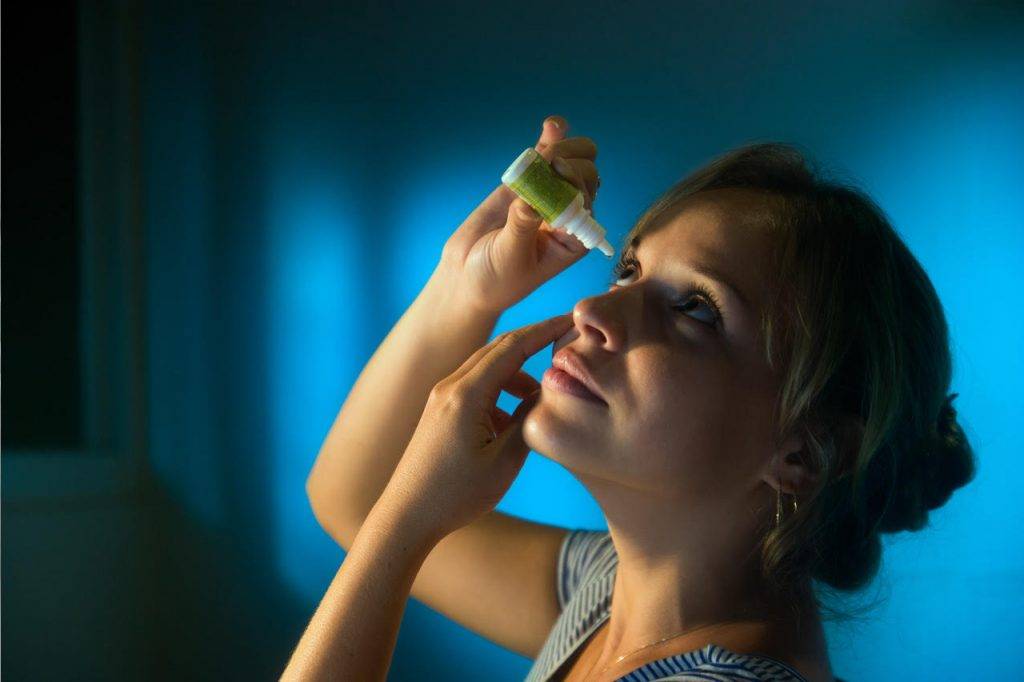Glaucoma eye drops are the most frequently prescribed treatment for glaucoma.
When a patient is diagnosed with glaucoma, eye doctors often prescribe eye drops to decrease the eye pressure that leads to optic nerve damage and permanent vision loss.
The type of glaucoma, its severity at time of diagnosis, the target pressure the doctor intends to achieve, and the patient’s overall health all influence which medication the doctor prescribes.
If one type of eye drop doesn’t sufficiently lower the patient’s eye pressure, the eye doctor will add another type of eye drop, switch to new eye drops, or even combine two different medications in one bottle.
The five most common types of eye drops used to treat glaucoma are listed below.
Types of glaucoma eye drops
Eye drops are usually the first step in glaucoma treatment. They’re utilized to assist in the drainage of fluid from the eye. They may also help to reduce the amount of fluid produced by the eye.
There are various types of eye drops to choose from:
Prostaglandin analogs
These drops relieve ocular pressure by increasing the amount of fluid that drains from your eyes through the drainage canals.
Bimatoprost, Latanoprost, Tafluprost and Travoprost are examples of this type of eye drop.
Side effects might include:
- Itching
- Stinging
- Redness
- Blurred vision
- Changes in eyelid skin color
SEE RELATED: Glaucoma: Can Meditation Help?
Contact an eye doctor near you to discuss which type of eye drops would best treat your glaucoma.
Beta blockers
These drops reduce the amount of fluid produced by your eye, resulting in reduced pressure. Betaxolol and Timolol are examples of beta blocker drops.
The following are examples of possible negative effects:
- Fatigue
- Depression
- Lower sex drive
- Slower heart rate
- Difficulty breathing
- Low blood pressure
Alpha-adrenergic agonists
Like prostaglandin analogs, these drops help with drainage and lessen the amount of fluid your eye produces.
Apraclonidine and Brimonidine are examples of these types of drops.
Side effects may include:
- Fatigue
- Dry mouth
- Headache
- Drowsiness
- Burning or stinging
- Irregular heart rate
- High blood pressure
Carbonic anhydrase inhibitors
Glaucoma is rarely treated using these drops. They relieve eye pressure by reducing the amount of fluid produced in the eye.
Examples of these drops include Brinzolamide and Dorzolamide.
Possible side effects include:
- Bitter taste
- Blurred vision
- Stinging and burning eyes
Combined medications
Your eye doctor may decide to mix two different drops into a single vial. Doing so can save both time and money. Each drug in the eye drops has different side effects.
Examples of combined medication drops include:
- Brimonidine and timolol
- Dorzolamide and timolol
- Brimonidine and brinzolamide
Cholinergic agents
In open-angle glaucoma, the cholinergic agents reduce IOP by increasing the facility of outflow of fluid from the eye.
These parasympathomimetic drugs open up the drainage channel known as Schlemm’s Canal, which allows the fluid to drain out, lowering the eye pressure.
When glaucoma medications don’t produce the expected outcomes or contain unwanted side effects, your eye doctor may decide to prescribe different medications. Nonetheless, medication is essential for maintaining your vision and regulating your eye pressure.
LEARN MORE: Guide to Eye Conditions
Contact an eye doctor near you to find out which glaucoma eye drops will be most effective for you.
When a patient is diagnosed with glaucoma, eye doctors often prescribe eye drops as the first line of treatment to decrease eye pressure, to prevent optic nerve damage and permanent vision loss.


